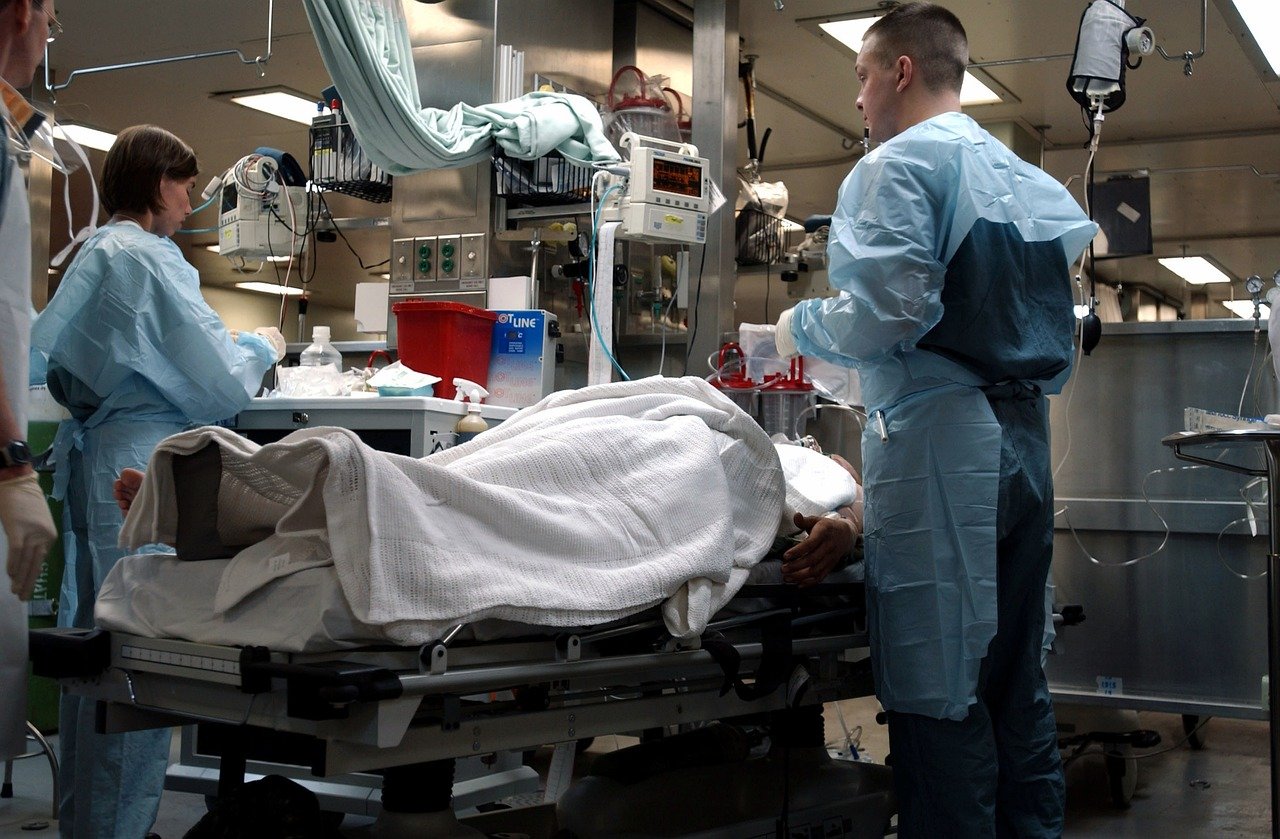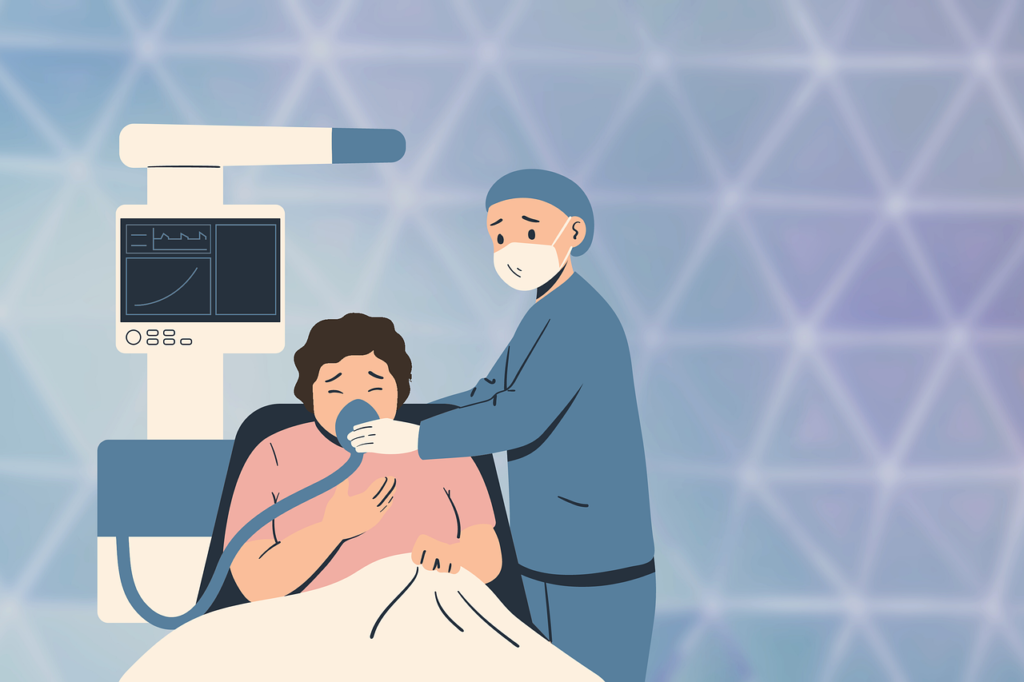Emergency Room Tech Jobs: Opportunities and Career Growth

Emergency Room (ER) Tech jobs offer a vital role in the healthcare sector, providing essential support to medical professionals in high-pressure environments. The demand for ER Techs is on the rise, driven by the increasing need for emergency medical services and advancements in healthcare technology. This article explores the opportunities and career growth potential for ER Techs, providing a comprehensive guide for those considering this rewarding career path.
What is an Emergency Room Tech?
An Emergency Room Technician (ER Tech), also known as an Emergency Department Technician, is a healthcare professional who assists doctors and nurses in emergency medical settings. They are trained to perform a variety of tasks, from patient care to administrative duties, ensuring the efficient operation of emergency departments.
Key Responsibilities of ER Techs
ER Techs are entrusted with a range of responsibilities that are crucial to the functioning of an emergency room. These include:
Patient Care
- Vital Signs Monitoring: ER Techs regularly check and record patients’ vital signs, including blood pressure, pulse, and temperature.
- Basic Medical Procedures: They perform procedures such as inserting IVs, drawing blood, and conducting EKGs.
- Wound Care: They clean and dress wounds, apply splints, and assist in suturing under the supervision of a physician.
Administrative Duties
- Patient Documentation: ER Techs help maintain accurate patient records and ensure all documentation is up-to-date.
- Equipment Maintenance: They are responsible for checking and preparing medical equipment, ensuring everything is in working order.
- Coordination with Medical Staff: ER Techs communicate effectively with doctors, nurses, and other healthcare professionals to coordinate patient care.
Educational Requirements
To become an ER Tech, one typically needs a high school diploma or GED. However, additional certifications and training can significantly enhance job prospects.
Certifications and Training Programs
- Emergency Medical Technician (EMT) Certification: Many ER Techs are certified EMTs.
- Basic Life Support (BLS) Certification: BLS certification is often required, teaching skills such as CPR and automated external defibrillator (AED) use.
- Advanced Education: Some ER Techs pursue further education, such as an associate’s degree in healthcare or a related field, to advance their careers.
Skills and Qualities of Successful ER Techs

Technical Skills
- Medical Knowledge: A solid understanding of medical terminology, procedures, and equipment is essential.
- Clinical Skills: Proficiency in performing medical tasks, such as phlebotomy and wound care, is crucial.
Soft Skills
- Communication: Strong communication skills are necessary for interacting with patients and medical staff.
- Problem-Solving: ER Techs must be able to think quickly and make decisions under pressure.
- Compassion and Empathy: Providing emotional support to patients and their families is an important part of the job.
Job Outlook and Opportunities
The job outlook for ER Techs is promising, with the healthcare industry expected to grow significantly in the coming years. According to the Bureau of Labor Statistics, employment for healthcare support occupations is projected to grow much faster than the average for all occupations.
Career Advancement
ER Techs have various opportunities for career advancement.
- Nursing: Some ER Techs pursue nursing degrees to become registered nurses (RNs) or advanced practice nurses.
- Healthcare Administration: With further education, ER Techs can transition into administrative roles within healthcare settings.
Salary Expectations
The salary of an ER Tech can vary based on factors such as location, experience, and education. On average, ER Techs earn a competitive wage, with opportunities for overtime and shift differentials increasing overall compensation.
Factors Affecting Salary
- Geographic Location: Salaries can vary significantly by region, with higher wages typically found in urban areas.
- Experience Level: More experienced ER Techs tend to earn higher salaries.
- Certification and Education: Additional certifications and higher education levels can lead to increased earning potential.
Challenges and Rewards of Being an ER Tech
Challenges
- High-Stress Environment: Working in an emergency room can be stressful, with constant pressure and high-stakes situations.
- Physical Demands: The job often requires long hours, standing for extended periods, and physically assisting patients.
Rewards
- Making a Difference: ER Techs play a crucial role in saving lives and providing critical care to patients in need.
- Career Satisfaction: Many ER Techs find great satisfaction in the fast-paced, dynamic nature of their work.
Steps to Becoming an ER Tech
2. Complete EMT Training
Enroll in a state-approved EMT training program and obtain certification.
3. Gain Experience
Look for entry-level positions in healthcare settings to gain hands-on experience.
4. Pursue Additional Certifications
Consider obtaining BLS certification and other relevant credentials to enhance your qualification.
6. Continue Education and Training
Consider pursuing further education to advance your career and increase your earning potential.
Conclusion
Emergency Room Tech jobs offer a rewarding and dynamic career path with numerous opportunities for growth and advancement. As healthcare continues to evolve, the demand for skilled ER Techs will only increase, making it an excellent choice for those passionate about helping others in high-stress environments.
Continuing Education and Professional Development
To remain competitive and enhance their skills, ER Techs should engage in continuing education and professional development. Many employers offer opportunities for on-the-job training and additional certifications, which can be crucial for career advancement.
Specialized Certifications
- Pediatric Advanced Life Support (PALS): This certification is essential for ER Techs working in environments where they will be treating children.
- Advanced Cardiac Life Support (ACLS): This certification provides advanced skills for managing cardiac emergencies and is often required in emergency departments.
Workshops and Seminars
Attending workshops and seminars can help ER Techs stay updated on the latest advancements in emergency medicine and healthcare technology. These events provide opportunities to learn from experts and network with other professionals in the field.

Networking and Professional Associations
Joining professional associations can provide ER Techs with valuable resources, networking opportunities, and a platform for advocacy. Some notable associations include:
- National Association of Emergency Medical Technicians (NAEMT): Offers a range of benefits, including continuing education, networking opportunities, and advocacy for the profession.
- American Medical Technologists (AMT): Provides certification, professional development, and networking opportunities for medical technologists, including ER Techs.
Impact of Technology on ER Tech Roles
Advancements in medical technology are continually reshaping the role of ER Techs. Understanding and adapting to these changes is crucial for career growth.
Electronic Health Records (EHRs)
The implementation of EHRs has streamlined patient documentation processes, allowing ER Techs to focus more on direct patient care. Familiarity with EHR systems is increasingly important for ER Techs.
Telemedicine
Telemedicine has expanded access to healthcare, especially in emergency situations. ER Techs may need to assist with telemedicine consultations, requiring proficiency with relevant technologies.
Work-Life Balance for ER Techs
Maintaining a healthy work-life balance is essential for ER Techs, given the demanding nature of their job. Strategies to achieve this balance include:
- Flexible Scheduling: Many healthcare facilities offer flexible scheduling options to accommodate the needs of their staff.
- Self-Care Practices: Engaging in regular self-care activities, such as exercise, hobbies, and relaxation techniques, can help manage stress.
- Support Systems: Building a strong support system, both personally and professionally, can provide emotional and practical support.
Future Trends in Emergency Medical Services
The field of emergency medical services is evolving, with several trends shaping the future of ER Tech roles.
Increased Demand for Emergency Services
As the population ages and healthcare needs grow, the demand for emergency medical services is expected to increase. This trend underscores the importance of ER Techs in the healthcare system.

Integration of Artificial Intelligence (AI)
AI is being integrated into emergency medicine to enhance diagnostics, treatment plans, and patient monitoring. ER Techs may need to become proficient in using AI tools and interpreting AI-generated data.
Focus on Preventive Care
There is a growing emphasis on preventive care to reduce the incidence of emergency medical situations. ER Techs can play a role in educating patients about preventive measures and health maintenance.
Conclusion
Emergency Room Tech jobs offer a challenging yet rewarding career path with numerous opportunities for professional growth and development. The demand for skilled ER Techs is set to rise, making it a promising field for those passionate about emergency medical care. By pursuing continuing education, engaging in professional development, and adapting to technological advancements, ER Techs can enhance their career prospects and contribute significantly to the healthcare system.
Real-life experiences and Testimonials from ER Techs
Hearing from those already in the field can provide valuable insights and inspiration for aspiring ER Techs. Here are some testimonials from experienced ER Techs:
Jessica S., ER Tech with 5 Years of Experience
The job is fast-paced and demanding, but the impact we make on patients’ lives is incredibly rewarding. One memorable experience was when we managed to stabilize a critical patient who came in with severe trauma. The teamwork and quick thinking involved were phenomenal.
Michael R., ER Tech and Nursing Student
The hands-on experience has given me a solid foundation in patient care and medical procedures. The skills I’ve learned here will definitely benefit me as I advance my career. Plus, the support from the medical staff and my peers has been amazing.”
Sophia K., Senior ER Tech
“Over the past decade, I’ve seen many changes in emergency medicine, from new technologies to updated protocols. Being an ER Tech has taught me the importance of adaptability and continuous learning. I’m now mentoring new ER Techs, and it’s fulfilling to pass on my knowledge and experiences. If you’re considering this career, know that it’s challenging but immensely gratifying.”
Common Questions About Becoming an ER Tech
1. What is the typical work environment for an ER Tech?
ER Techs primarily work in hospital emergency rooms, but they may also be employed in urgent care centers and other healthcare facilities.
2. What are the physical demands of the job?
The role of an ER Tech can be physically demanding. It involves standing for long periods, lifting and moving patients, and performing repetitive tasks.
3. What are the most important qualities for an ER Tech?
Key qualities include strong communication skills, empathy, the ability to work under pressure, attention to detail, and a willingness to learn and adapt. Technical skills and medical knowledge are also crucial.
4. How do ER Techs interact with other healthcare professionals?
ER Techs work closely with doctors, nurses, and other medical staff. Effective teamwork and communication are essential to provide high-quality patient care and ensure smooth operations in the emergency department.
5. What are the opportunities for career advancement?
ER Techs can advance their careers by gaining experience, obtaining additional certifications, and pursuing further education. Opportunities include becoming a paramedic, registered nurse, or healthcare administrator.
The Role of ER Techs in Public Health and Community Safety
Their skills and expertise are crucial in providing immediate medical care and support.
Disaster Response
In disaster scenarios, ER Techs are often among the first responders, providing critical care to those affected. Their ability to perform under pressure and adapt to rapidly changing situations is essential.
Public Health Education

ER Techs can also contribute to public health by educating communities about emergency preparedness and preventive care. This outreach can help reduce the incidence of emergencies and improve overall community health.
Collaboration with Emergency Services
ER Techs frequently collaborate with other emergency services, such as paramedics, firefighters, and law enforcement. This teamwork is essential for coordinated responses to emergencies and effective patient care.
The Importance of Mental Health Support for ER Techs
Given the high-stress nature of the job, mental health support is crucial for ER Techs. Many healthcare facilities offer resources to help employees manage stress and prevent burnout.
Access to Counseling Services
Counseling services can provide ER Techs with a safe space to discuss their experiences and receive professional support. This can be vital in managing the emotional toll of working in an emergency setting.
Peer Support Programs
Peer support programs allow ER Techs to connect with colleagues who understand the unique challenges of the job. Sharing experiences and coping strategies can be incredibly beneficial.
Stress Management Techniques
Learning and practicing stress management techniques, such as mindfulness, meditation, and physical exercise, can help ER Techs maintain their mental well-being. Regular self-care is essential for sustaining a long and healthy career.
Professional Development and Continuing Education Resources
Online Courses and Certifications
Many institutions offer online courses and certifications that can help ER Techs enhance their skills and knowledge. Some of the notable platforms include:
- Coursera: Offers a variety of healthcare-related courses from top universities.
- edX: Provides courses on emergency medicine, healthcare management, and more.
- American Red Cross: Offers certification courses in CPR, First Aid, and other emergency response skills.
Community Colleges and Technical Schools
Local community colleges and technical schools often provide certification programs and courses tailored for ER Techs. These programs can be a cost-effective way to gain additional qualifications and stay updated on the latest medical practices.
Professional Conferences and Workshops
Attending professional conferences and workshops can provide ER Techs with the latest industry knowledge, networking opportunities, and hands-on training. Some prominent events include:
- EMS Today Conference & Exposition: A leading event for EMS professionals to learn about new products, services, and practices.
- American Heart Association Conferences: Focus on cardiovascular care and emergency response, offering valuable insights for ER Techs.
Technological Advancements in Emergency Medicine
As technology continues to evolve, so too does the role of ER Techs. Keeping abreast of these advancements is crucial for staying relevant in the field.
Wearable Health Devices
ER Techs may need to be familiar with interpreting data from devices such as smartwatches and health monitors, which can be critical during emergency situations.
Robotics and Automation
Robotic technology is being integrated into healthcare for tasks ranging from surgery to patient monitoring. ER Techs may interact with robotic systems for certain procedures, requiring knowledge of how to operate and troubleshoot these devices.
Telehealth and Remote Monitoring
Telehealth services are expanding, allowing patients to receive medical care remotely. ER Techs might assist in setting up telehealth consultations and managing remote monitoring systems, making it essential to understand these technologies.

Workplace Safety and Risk Management
Ensuring workplace safety is a critical aspect of the ER Tech role. Understanding and adhering to safety protocols can prevent injuries and improve the overall efficiency of the emergency room.
Personal Protective Equipment (PPE)
Proper use of PPE, such as gloves, masks, and gowns, is vital for protecting both ER Techs and patients. Regular training on the correct use and disposal of PPE can mitigate the risk of infections and contamination.
Handling Hazardous Materials
ER Techs often encounter hazardous materials, including bodily fluids and sharp instruments. Knowledge of handling and disposing of these materials is crucial for maintaining a safe work environment.
Emergency Protocols
Familiarity with emergency protocols, such as those for fire safety, chemical spills, and active shooter situations, is essential for ensuring the safety of patients and staff. Regular drills and training sessions can help ER Techs respond effectively to emergencies.
Advocacy and Leadership in the Healthcare Community
ER Techs can take on advocacy roles within the healthcare community, influencing policies and practices that improve patient care and working conditions.
Professional Organizations
Joining professional organizations allows ER Techs to participate in advocacy efforts and stay informed about industry developments. Organizations such as the National Association of Emergency Medical Technicians (NAEMT) and the American Medical Technologists (AMT) offer platforms for advocacy and leadership.
Community Outreach
ER Techs can engage in community outreach programs to educate the public about emergency preparedness and health promotion. This involvement can enhance the reputation of ER Techs and foster a stronger connection with the community.
Mentorship and Training
Experienced ER Techs can mentor new technicians, sharing their knowledge and helping them navigate the challenges of the job. This leadership role not only contributes to the professional growth of new ER Techs but also strengthens the overall emergency medical team.
Navigating the Job Market
Understanding the job market and knowing where to look for opportunities can significantly enhance an ER Tech’s career prospects.
Job Search Strategies
- Networking: Attending industry events and joining professional organizations are effective ways to network.
- Online Job Boards: Websites like Indeed, Monster, and LinkedIn frequently list job openings for ER Techs.
- Hospital Websites: Regularly checking these sites can help you find positions that match your skills and experience.
Resume and Interview Tips
- Tailor Your Resume: Customize your resume to highlight relevant skills and experience for each job application. Emphasize certifications, technical skills, and hands-on experience in emergency settings.
- Prepare for Interviews: Practice answering common interview questions and be ready to discuss specific experiences that demonstrate your ability to handle the demands of an ER Tech role. Highlight your problem-solving skills, teamwork, and ability to work under pressure.
Frequently Asked Questions (FAQs)

1. What is the primary role of an Emergency Room (ER) Tech?
Answer: An ER Tech supports doctors and nurses in emergency settings by performing tasks such as monitoring vital signs, assisting with medical procedures, transporting patients, and maintaining medical equipment. They play a crucial role in ensuring the efficient operation of the emergency department.
2. What education and certifications are required to become an ER Tech?
Answer: Typically, a high school diploma or GED is required. Many ER Techs are certified Emergency Medical Technicians (EMTs), which involves completing a state-approved training program and passing a certification exam.
3. What skills are essential for an ER Tech?
Answer: Essential skills include strong medical knowledge, proficiency in clinical tasks, effective communication, problem-solving abilities, empathy, and the ability to work under pressure. Technical skills related to medical equipment and procedures are also crucial.
4. What is the job outlook for ER Techs?
Answer: The job outlook for ER Techs is promising, with employment expected to grow due to increasing healthcare needs and the expansion of emergency medical services. The healthcare industry is projected to grow significantly in the coming years, providing numerous opportunities for ER Techs.
5. What are the career advancement opportunities for ER Techs?
Answer: ER Techs can advance their careers by gaining experience, obtaining additional certifications, and pursuing further education. Opportunities include becoming a paramedic, registered nurse, or healthcare administrator. Some may also move into specialized roles within emergency medicine.
6. What are the typical working conditions for an ER Tech?
Answer: ER Techs work in fast-paced and often stressful environments, such as hospital emergency rooms and urgent care centers. The job involves standing for long periods, handling physically demanding tasks, and working irregular hours, including nights, weekends, and holidays.
7. How does technology impact the role of an ER Tech?
Answer: Technology significantly impacts the role of ER Techs. They need to be proficient in using electronic health records (EHRs), telemedicine platforms, and wearable health devices. Advances in medical technology, such as robotics and AI, also require ER Techs to continually update their skills and knowledge.
8. What do ER Techs face the challenges?
Answer: Challenges include working in high-stress and high-pressure environments, dealing with physically demanding tasks, and managing emotional stress from patient care. ER Techs must also keep up with rapid changes in medical technology and procedures.
9. How can ER Techs maintain a healthy work-life balance?
Answer: Maintaining a healthy work-life balance involves flexible scheduling, regular self-care practices, and building a strong support system. Engaging in stress management techniques such as exercise, hobbies, and relaxation can help ER Techs manage the demands of their job.
10. What resources are available for ER Techs seeking professional development?
Answer: Resources for professional development include online courses and certifications, community college programs, professional conferences, and workshops. Joining professional organizations like the National Association of Emergency Medical Technicians (NAEMT) and American Medical Technologists (AMT) can also provide valuable networking and educational opportunities.

What Remote Will Work with Google Chromecast Ultra
What Types of Jobs Are Available at United Healthcare?




